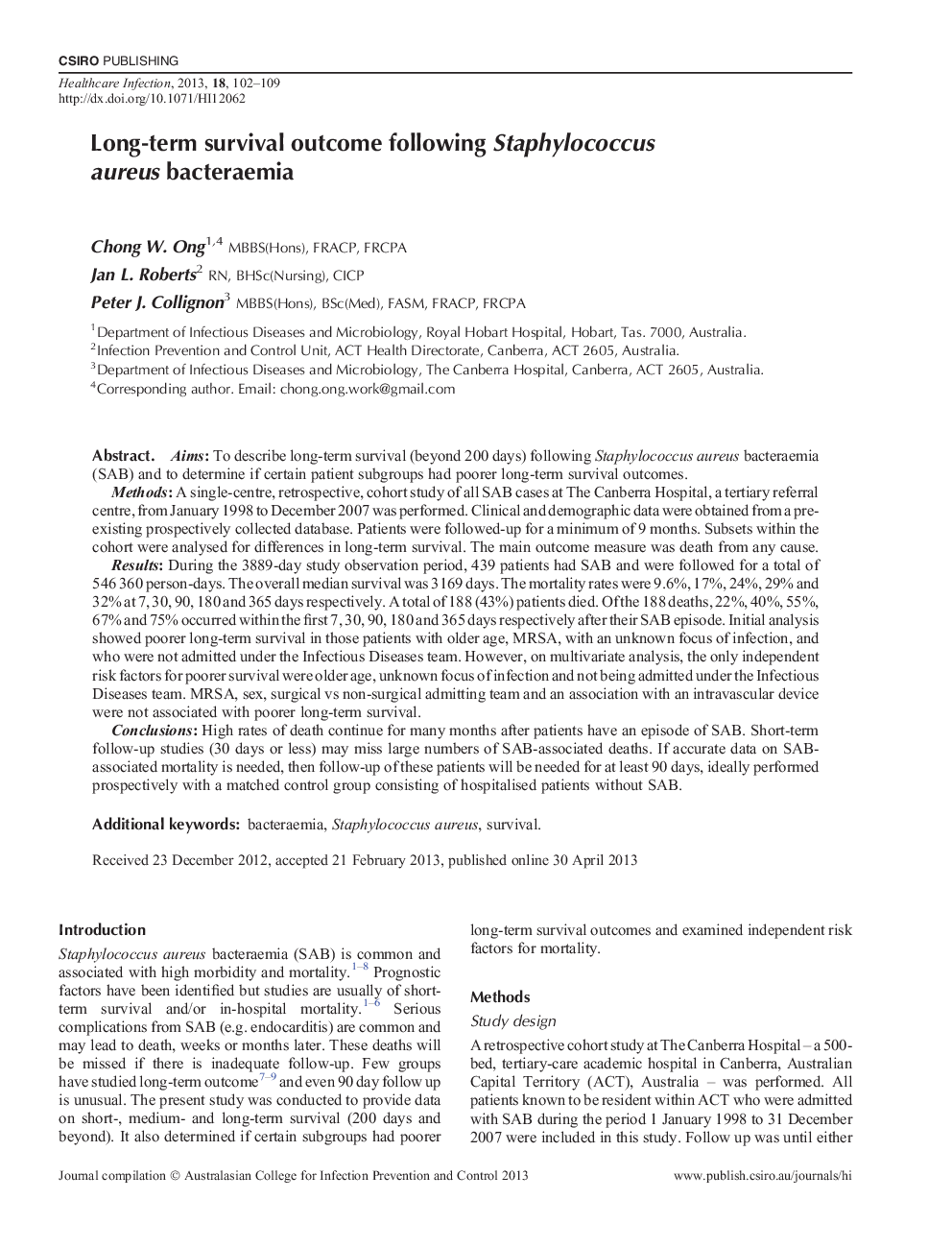| Article ID | Journal | Published Year | Pages | File Type |
|---|---|---|---|---|
| 2679644 | Healthcare infection | 2013 | 8 Pages |
AimsTo describe long-term survival (beyond 200 days) following Staphylococcus aureus bacteraemia (SAB) and to determine if certain patient subgroups had poorer long-term survival outcomes.MethodsA single-centre, retrospective, cohort study of all SAB cases at The Canberra Hospital, a tertiary referral centre, from January 1998 to December 2007 was performed. Clinical and demographic data were obtained from a pre-existing prospectively collected database. Patients were followed-up for a minimum of 9 months. Subsets within the cohort were analysed for differences in long-term survival. The main outcome measure was death from any cause.ResultsDuring the 3889-day study observation period, 439 patients had SAB and were followed for a total of 546 360 person-days. The overall median survival was 3169 days. The mortality rates were 9.6%, 17%, 24%, 29% and 32% at 7, 30, 90, 180 and 365 days respectively. Atotal of 188 (43%) patients died. Of the 188 deaths, 22%, 40%, 55%, 67% and 75% occurred within the first 7, 30, 90, 180 and 365 days respectively after their SAB episode. Initial analysis showed poorer long-term survival in those patients with older age, MRSA, with an unknown focus of infection, and who were not admitted under the Infectious Diseases team. However, on multivariate analysis, the only independent risk factors for poorer survival were older age, unknown focus of infection and not being admitted under the Infectious Diseases team. MRSA, sex, surgical vs non-surgical admitting team and an association with an intravascular device were not associated with poorer long-term survival.ConclusionsHigh rates of death continue for many months after patients have an episode of SAB. Short-term follow-up studies (30 days or less) may miss large numbers of SAB-associated deaths. If accurate data on SAB associated mortality is needed, then follow-up of these patients will be needed for at least 90 days, ideally performed prospectively with a matched control group consisting of hospitalised patients without SAB.
